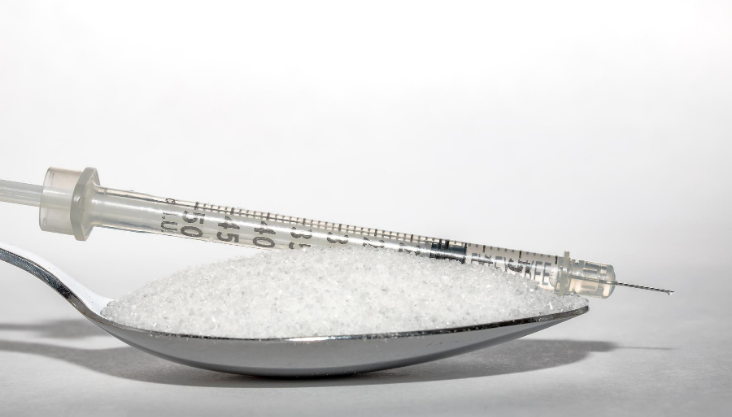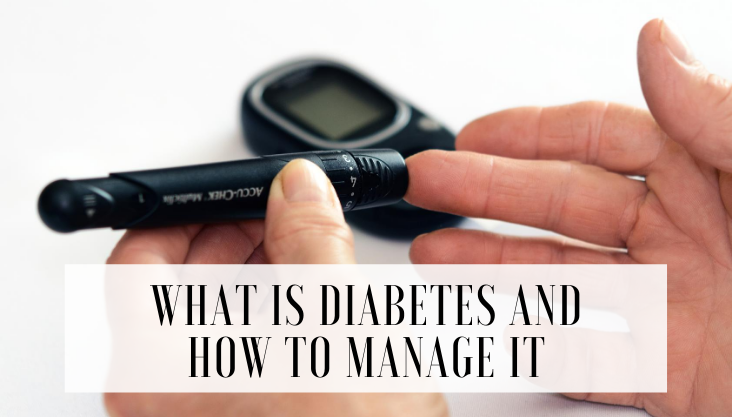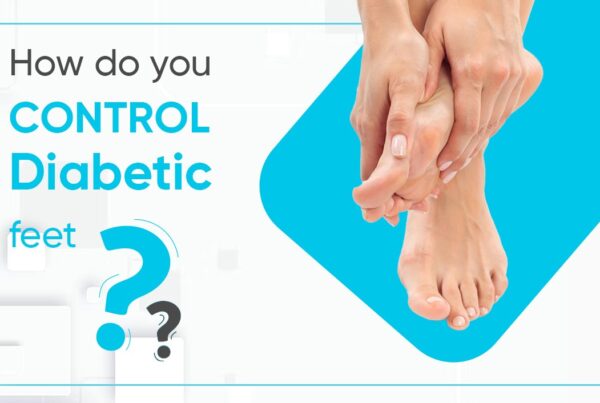What Is Diabetes And How To Manage It
Diabetes is a disorder affecting the capacity of the body to absorb blood glucose and commonly referred to as blood sugar. Glucose is essential for your well being, as it is a major source of energy for the cells in the body which make your muscles and tissues. It’s also the key form of fuel for your brain.
The root cause differs according to type. Yet, no matter which type of diabetes, you’re having, it might lead to high blood sugar. Far too much blood sugar can cause severe health problems.
Without continuous careful monitoring, it can lead to an accumulation of blood sugars that can raise the risk of major complications, namely heart disease and stroke. The most prominent is type 2 diabetes, typically in adults, and happens when the blood is insulin resistant or is not producing sufficient insulin.
Prediabetes and its treatment
Prediabetes is used to relate elevated blood sugar that has not yet exceeded a diagnostic stage of type 2 diabetes. This can be managed by changes in lifestyle, such as a balanced diet, weight management, and daily exercise. If you do have prediabetes, the long-term damage to the heart, blood vessels, and kidneys, in particular, has already begun. But the good news is this progression can be stopped. Changes in the lifestyle can prevent future type 2 diabetes and can help bring back normal blood sugar levels.

Types of Diabetes
Type 1, type 2, and gestational diabetes are the most commonly found diabetes.
Type 1 Diabetes
When you have type 1 diabetes, insulin isn’t made in your body. The immune system attacks and kills the insulin-forming cells in the pancreas. Type 1 diabetes in children and adolescents is commonly identified, even though it can start at any age. Individuals with type 1 diabetes are expected to take insulin every day to actually survive.
Type 2 Diabetes
The pancreas produces insulin in type 2 diabetes so either it does not produce sufficient, or the insulin may not function effectively. This form occurs most often in people above 40 years of age, but it can occur even in infancy if factors are present. Often type 2 diabetes can be regulated by a blend of diet, weight control, and workout. Treatment can also require oral glucose-lowering drugs or insulin shots. The most common type of diabetes is type 2.
Gestational diabetes
In certain women, gestational diabetes evolves while they are pregnant. Gestational diabetes is caused by the hormones secreted during pregnancy, which block insulin. This form of diabetes much of the time goes away after the baby has been born. And, if you do have gestational diabetes, you are more likely to develop type 2 diabetes later on in life. Diabetes reported at times during pregnancy is in reality type 2 diabetes. Pregnant women at elevated risk for gestational diabetes include those who
- Are in the late thirties
- Obese
- Have Diabetes in family
- Record of polycystic ovary syndrome
What are the symptoms?
Some of the symptoms of Diabetes include:
1. Thirst heightened.
2. Hunger worsened
3. Dry mouth.
4. Slow-cure wounds
5.Persistent urination
6.Indecipherable weight loss
7.Blurred vision
8.Withered, itchy skin
9. Feeling low and tired
10.Tingling or insensitivity. of hands or feet.
11.yeast infections
Treatment for Diabetes
Those with type 1 diabetes should take insulin since the hormone is not formed by a patient with type 1 diabetes. Additional insulin is needed for the body cells to consume glucose and utilize energy. An individual with type 1 diabetes needs insulin many times throughout the day. Most insulin doses are given before or after meals.
Insulin is an effective treatment for type 2 diabetes when food, losing weight, workout, and oral drugs cannot regulate blood glucose levels. Metformin is a main Type 2 drug people take as a tablet and also as a liquid. It helps to regulate blood sugar and render insulin more potent, and also support weight loss which could also lower diabetes effects.

Your physician will assess the dosage, or how much insulin is necessary. There is really no standard dose of insulin because it depends on many factors such as the weight of your body, when you dine, and when you work out or how much insulin your body can make.
Many drugs suppress blood sugar and induce hypoglycemia, or low blood sugar if a patient takes them after mealtimes. After getting a prescription, talk to a doctor to determine the risk of this and other adverse reactions.
Physical exercise is essential to the use of extra glucose in the body and the tissues becoming more sensitive to insulin. Exercise is more serious scenarios can help reverse diabetes in its initial stages, and avoid heart-related risks. Aerobic exercise can help maintain weight, lower blood glucose, and enhance body insulin use.

Some Causes of Diabetes are:
- Damage to pancreas
- Age factor
- Family history of Diabetes
- Smoking
- Obesity
- High Blood cholesterol
- Autoimmune Disease
- Some ethnic people are more prone to Diabetes
- Taking medications, also steroids
- 10.Polycystic Ovary Syndrome
Food for diabetes
A diabetic person also can consume the foods they love, much less often or in tiny portions. Follow a physician or dietitian’s guidance, eat a balanced meal plan that contains food from all classes, and adhere to the quantities prescribed. Most people with diabetes should eat every day at the usual time, while others have a bit better flexibility when it comes to meal timings.
Carbohydrates have quite a major effect on blood glucose levels, so you need to be careful about what kinds of carbs you are consuming. Ban processed carbs, such as white bread, pasta, rice, soda, sweets, and snacks.
It is essential for humans with diabetes to eat food’s fiber-rich because fiber slows down the digestive process. Longer nutrient absorption tends to regulate blood sugar levels.
Fatty fish is a healthy supplement to every diet. Fatty fish carry valuable fatty acids called omega-3. Individuals must have a certain amount of healthy fats to keep their body working and encourage a healthy heart and brain. The ADA says a rich diet in polyunsaturated and monounsaturated fats in diabetic patients can boost blood sugar control and blood lipids.
Foods to Avoid
It is best to limit the consumption of foods with a high glycemic index. One way to cope with dietary diabetes is to combine high and low glycemic index food. High GI foods boost blood sugar levels more than low GI foods. Reduce the servings and combine these foods with protein or good fat to reduce the effect on blood sugar and stay satisfied for longer when eating high-GI foods. Harmful fats, like trans and saturated fats, can deteriorate the health condition of people with diabetes. Such types of fats are present in many prepackaged foods like chips, cookies, and baked goods.
Alcohol consumption must be limited if the patient takes insulin or insulin secretagogue therapies as it can cause hypoglycemia.
Protein sources that also have fat in them like full-fat milk, bacon, fried fish, and processed meats should be avoided or limited.
Eatables with high sugar content are better to avoid or consume in small amounts. Sugar is low carb carbohydrates with no nutritional value and can cause a spike in blood sugar levels.
Looking for the Best Diabetologist to manage your Diabetes? Connect to Tambaram Medical Center Chennai’s N0 One Clinic for specialized diabetes care. We are rated as the best diabetes clinic in Tambaram. The center is run under the supervision of DR Ashwin Karuppan the best Diabetologist in Tambaram, Chennai.









